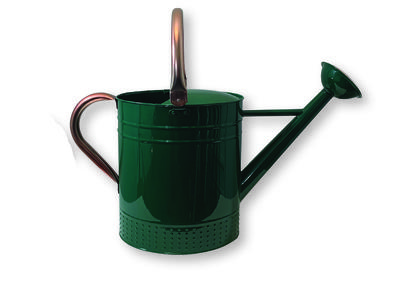
Lawn Maintenance: Embracing 'No Mow May'
As summer approaches, many of us are looking at our garden grass and wondering what we need to be doing. Recognising the ups, downs and differing maintenance of different types of grass can help save huge amounts of frustration, money and hard work. First, think about what you want from your grass, and what the site and conditions would favour.
It is helpful to make a distinction between three main types of turf in the garden; fine turf, informal lawn, and meadow.
The first is the grass you see with ‘keep off the grass’ signs, on golf courses, and bowling greens. Fine turf uses particular types of grass with tiny, slim blades that make a really tight-knit, smooth textured lawn. This needs mowing up to 3 times a week, often accompanied by aeration, scarification, topdressing, selective herbicides, moss-killers and fertilisers, and irrigation during dry spells. The site needs well drained sandy soil and good light levels. This type of grass is easily damaged by pets, footfall, and wildlife. Fine turf needs the conditions to be just right, with a strict maintenance programme, and a good level of passion and effort to protect from damage to maintain that pristine look.
Informal lawns, often just called ‘grass’, are typically mown at a higher setting only as often as needed to maintain a green carpet for general family use. These can be ‘mulch mown’, meaning the clippings are scattered directly back to the grass rather than being collected by the mower. This recycles nutrients back to the lawn directly, meaning fertilisers are not needed to keep the lawn looking green. Low creeping wildflowers thrive in informal grass, such as buttercups, daisies, clover and self-heal. Moss need not be seen as a problem. Fertilising informal lawns causes the grass species to outcompete many of the wildflowers, so avoid adding nutrients for the benefit of the wildlife and floral beauty those flowers provide. This type of grass is fairly resilient to damage, and requires little fuss or expensive inputs.
The last type of grass is meadow. Meadows are left to grow in spring and summer, being cut down in late July or August. On fertile ground, meadows are dominated by grasses, and a few thuggish wildflowers like docks and nettles. The highly diverse meadows we imagine, with abundant wildflowers in early summer, require low soil fertility to suppress the thugs and give space for more delicate flowering plants that support more wildlife. This is done by cutting and removing grass clippings over the years, to remove nutrients from the soil. The grass is ‘scalped’ when cut, meaning it is cut at the shortest possible setting to expose bare soil, onto which wildflower seeds may be scattered to improve the diversity of flowers. In a garden, mowing a border to a meadow, and cutting paths through it, helps incorporate it into the garden design and prevent the area looking neglected.
Why not try #NoMowMay this year, to see what wildflowers are hiding in your garden?


